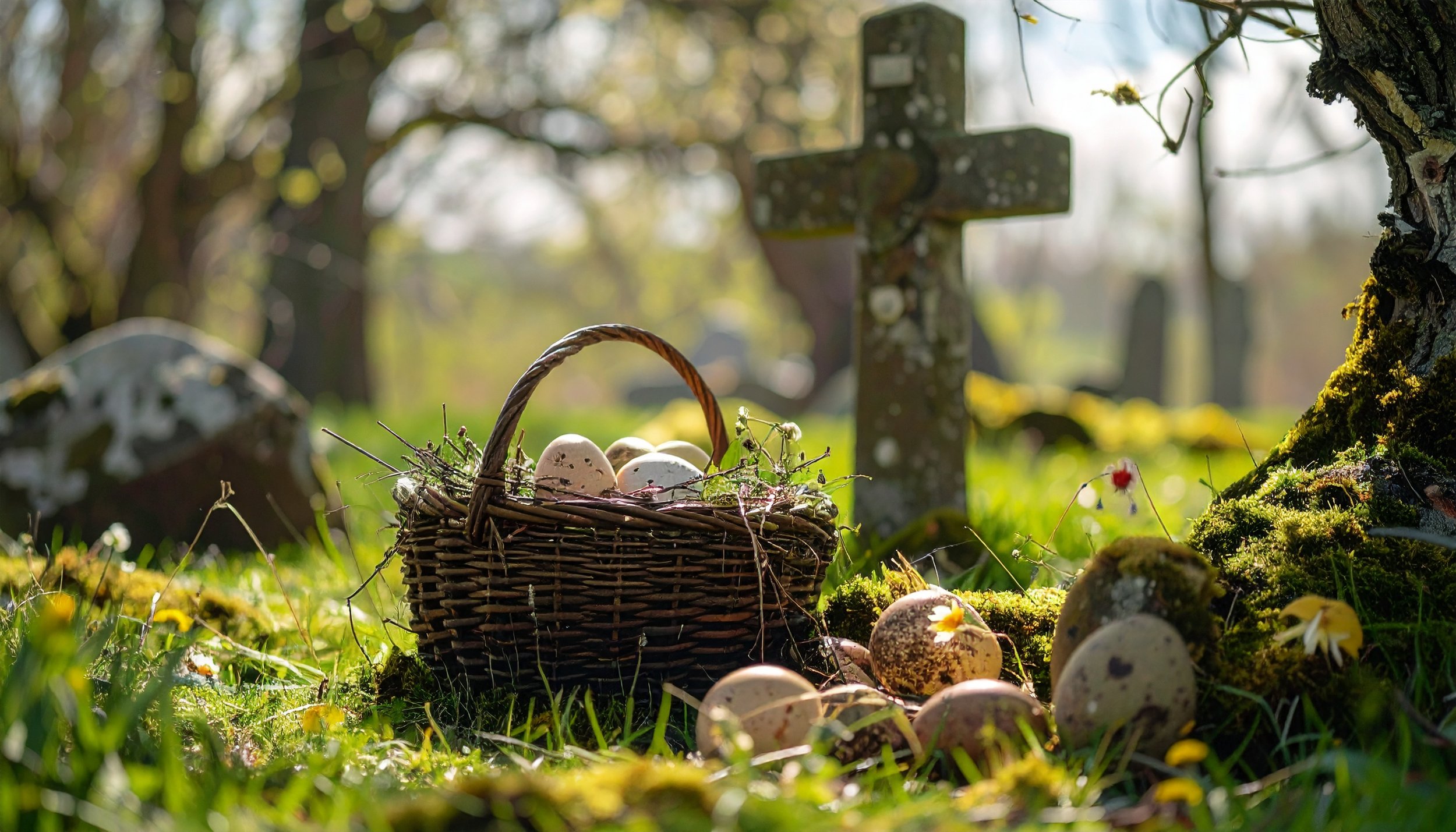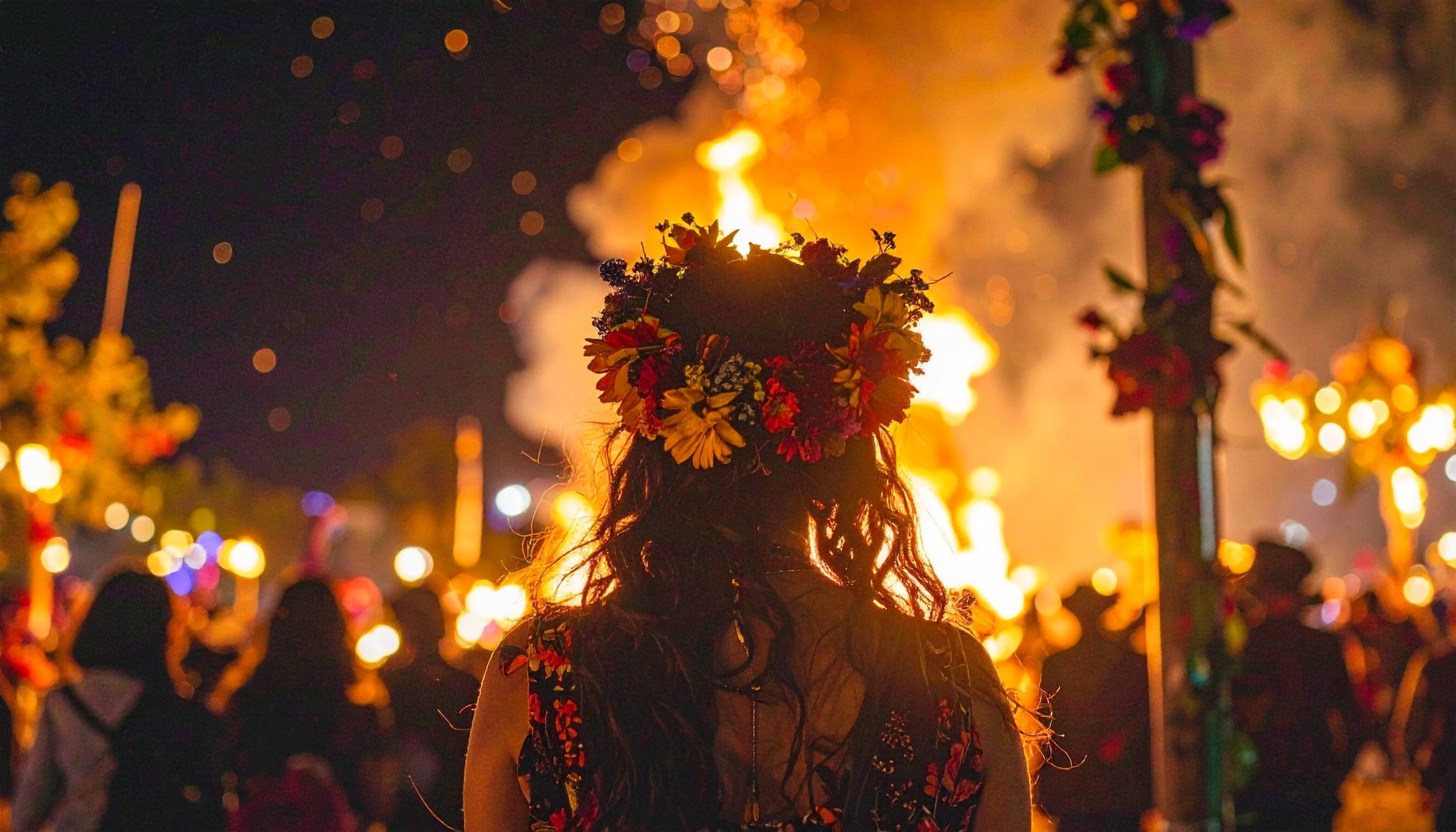Beltane: Understanding the Meaning and Traditions of the Spring Fire Festival
As the wheel of the year turns, Beltane marks the passage from spring’s tender awakening into the full flourishing of life. Celebrated around May 1st, Beltane has its roots in ancient Celtic traditions—but its essence belongs to all of humanity. Long before written history, cultures around the world honored the rhythms of the earth, the rising fires of the sun, and the mysteries of renewal that Beltane represents.
Today, as we reclaim our connection to the seasons, Beltane invites us to remember what was never truly lost: our innate bond with the cycles of life, death, and rebirth.
What is Beltane?
Beltane is one of the ancient cross-quarter festivals, falling midway between the spring equinox and the summer solstice.
Its origins are most famously traced to the Celtic lands, where it was celebrated as a fire festival—igniting the energies of fertility, growth, and protection for the months to come.
Bonfires were lit on hilltops, symbolizing purification and blessing. Couples leapt across flames, communities danced through the night, and offerings were made to the forces of nature.
But Beltane is not solely a Celtic tradition.
Across the globe, humanity has long honored the seasonal transitions:
Festivals like Holi (India) and Nowruz (Persia) celebrate the arrival of spring near the equinox.
However, only a few, like Walpurgis Night (Germany, Sweden) and May Day (throughout Europe), mirror Beltane's focus—marking the full flowering of spring at its vibrant midpoint between equinox and solstice.
Solar holidays have always been the tradition of mankind; we have simply forgotten how deeply they once anchored the human spirit to the rhythms of the earth.
The Connection Between Easter and Beltane
While Beltane is rooted most famously in the Celtic traditions of Britain and Ireland, the deeper forces it celebrates—renewal, fertility, and the triumph of life over death—are ancient and nearly universal. Long before Christianity shaped the calendar of Europe, spring was recognized and honored across cultures as a season of profound spiritual significance.
Easter itself, though now associated with the resurrection of Christ, carries ancient echoes of earlier spring rites.
The very word "Easter" is believed to derive from Eostre (or Ēastre), a goddess of spring and dawn venerated by early Anglo-Saxon peoples. According to the 8th-century English monk Bede, Eostre was honored during the month of Ēosturmōnaþ (modern April), with feasts celebrating the renewal of light and life. Her symbols—the hare (a creature of prolific fertility) and the egg (emblem of creation)—persist today in the customs of Easter, even though their meanings have often been forgotten.
Easter’s timing is also significant: it is a moveable feast, celebrated on the first Sunday after the first full moon following the spring equinox. This places it near the vernal equinox, a threshold moment when light begins to overcome darkness and the earth’s energies turn outward once again.
In this way, Easter mirrors the spiritual energy of Beltane, though they celebrate different points along the cycle:
Easter honors the first stirrings of rebirth, the crossing out of winter’s shadow.
Beltane exults in the full flowering of life, the height of spring’s vitality before the peak of summer.
The very word "Easter" is believed to derive from Eostre (or Ēastre), a goddess of spring and dawn venerated by early Anglo-Saxon peoples.
If Easter is the moment the seed breaks open in the soil, Beltane is the moment the blossom unfurls its face to the sun.
Both festivals trace their lineage back to humanity's ancient longing to understand and honor the rhythms of the natural world: the dying and rising of the sun, the fallow and fecund cycles of the land, the mystery of death yielding to life.
It is no accident that Christianity, as it expanded, chose to place its own story of resurrection near the older rites of spring. By layering new meanings over ancient patterns, the deeper seasonal truths endured: that life, once lost, can rise again; that after winter, the earth and soul alike must bloom.
In honoring Beltane today, we remember not only the traditions of the Celts but the timeless spiritual wisdom shared by peoples across all lands and ages—the wisdom of the earth itself.
Beltane Rituals and Traditions
Traditional Beltane celebrations are rich with symbolic acts of connection:
Fire Ceremonies: Bonfires served as communal hearths of blessing and transformation.
Maypole Dances: Weaving ribbons around a pole symbolized the union of masculine and feminine forces, a dance of balance and creation.
The May Queen and Green Man: Embodiments of spring’s abundance and vitality, celebrated through pageantry and ritual.
Modern celebrations often adapt these practices—lighting candles in place of great fires, creating flower crowns, or gathering for intentional community ceremonies.
How to Celebrate Beltane Today
You don't need a massive gathering or ancient lineage to celebrate Beltane. Here are simple ways to align with the season's energies:
Light a Sacred Fire: A bonfire, a candle, even a small hearth—fire is at the heart of Beltane's magic. Let it symbolize both purification and passion.
Create with Nature: Weave flower crowns, braid greenery, decorate your space with blossoms that speak of life’s return.
Set Intentions: Write down wishes for growth, love, and creation. Offer them to the fire, the earth, or the winds.
Dance or Move Freely: Move your body in joy—whether through ritual dance or simply feeling the aliveness of the moment.
Gather Community: Celebrate with others, if possible. Even a small gathering reconnects us to the ancient practice of honoring the seasons together.
The Significance of Beltane in Modern Times
In a world increasingly disconnected from nature’s rhythms, celebrating Beltane is an act of remembrance.
It is a way of stepping out of artificial time and into the eternal dance of sun, earth, and spirit. It is a reclaiming of joy—not fleeting happiness, but the deep, embodied joy that arises when we recognize ourselves as part of a living world.
Beltane reminds us that we, too, are fertile ground for dreams, creations, and new life. The fire burns within us, ready to be tended.
Conclusion
Beltane is not just a relic of ancient Celtic culture—it is a living celebration, a portal to remembering who we are beneath the noise of modern life. As the fires of Beltane are rekindled each year, so too can we rekindle our connection to the earth, to each other, and to the sacred rhythms that pulse through all existence.
This Beltane, may you light your own inner fire—and may it guide you into a season of vibrant growth.



